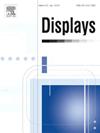Single image super-resolution with channel attention and diffusion
IF 3.7
2区 工程技术
Q1 COMPUTER SCIENCE, HARDWARE & ARCHITECTURE
引用次数: 0
Abstract
Single image super-resolution (SISR) is a fundamental vision task that facilitates a range of applications. In SISR, human perception, objective quality index, and complexity are three main concerns. In this paper, we propose a new SISR framework known as single image super-resolution with channel attention and diffusion (SRCAD). The proposed SRCAD combines the stochastic iterative mechanism of the denoising diffusion probabilistic model (DDPM) with advanced feature encoding techniques. With the guidance of encoded features, the diffusion model better predicts SR images with more details, and the model size is also reduced as well. To be specific, in feature encoding, SRCAD introduces a pre-trained encoder combined with dimensional interleaved product channel attention (DIP-CA), which extracts key features at a low computational cost. The extracted deep features guide iterative denoising and are combined with distribution-aware feature subset fusion (DFSF) to reduce the data dimension of the features. Experimental results demonstrate that SRCAD performs well on four datasets and two SR tasks. It also outperforms other state-of-the-art models in terms of objective quality metrics, including PSNR, SSIM, and LR-PSNR. Besides, it also reduces the number of parameters, thus delivering high performance with low complexity.
具有通道关注和扩散的单图像超分辨率
单图像超分辨率(SISR)是一项基本的视觉任务,促进了一系列的应用。在SISR中,人类感知、客观质量指标和复杂性是三个主要关注点。在本文中,我们提出了一种新的SISR框架,称为具有通道注意和扩散的单图像超分辨率(SRCAD)。该算法将扩散概率模型(DDPM)去噪的随机迭代机制与先进的特征编码技术相结合。在编码特征的引导下,扩散模型能够更好地预测具有更多细节的SR图像,并且模型尺寸也减小了。具体而言,在特征编码中,SRCAD引入了一种结合维度交错产品通道注意(DIP-CA)的预训练编码器,以较低的计算成本提取关键特征。提取的深度特征引导迭代去噪,并结合分布感知特征子集融合(DFSF)降低特征的数据维数。实验结果表明,SRCAD在4个数据集和2个SR任务上表现良好。它在客观质量度量方面也优于其他最先进的模型,包括PSNR、SSIM和LR-PSNR。此外,它还减少了参数的数量,从而以低复杂性提供高性能。
本文章由计算机程序翻译,如有差异,请以英文原文为准。
求助全文
约1分钟内获得全文
求助全文
来源期刊

Displays
工程技术-工程:电子与电气
CiteScore
4.60
自引率
25.60%
发文量
138
审稿时长
92 days
期刊介绍:
Displays is the international journal covering the research and development of display technology, its effective presentation and perception of information, and applications and systems including display-human interface.
Technical papers on practical developments in Displays technology provide an effective channel to promote greater understanding and cross-fertilization across the diverse disciplines of the Displays community. Original research papers solving ergonomics issues at the display-human interface advance effective presentation of information. Tutorial papers covering fundamentals intended for display technologies and human factor engineers new to the field will also occasionally featured.
 求助内容:
求助内容: 应助结果提醒方式:
应助结果提醒方式:


